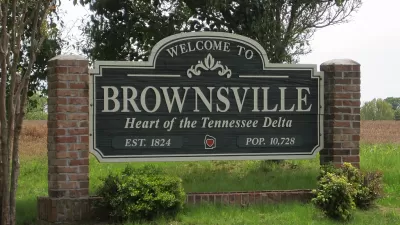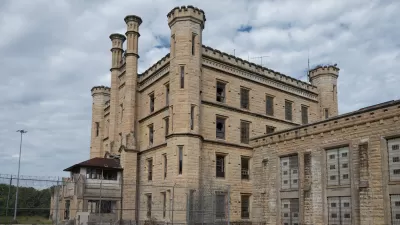Prison construction is flourishing under the assumption that it boosts rural economies, but as Eric Lotke points out, investing in other types of building would yield greater returns to society.
"The good news is that public investment can work. The bad news is that better choices must be made. We need to distinguish between prisons for crime control and prisons as a jobs program, between building for the future and building for the past.
Forty-one states have already reported budget problems for the current or upcoming fiscal year, and it's likely to get worse. States are starting to cut benefits and services ranging from health care to public schools and early childhood education.
But one budget item is never questioned: prisons.
Even as states spend nearly $50 billion on prisons every year and counties spend over $20 billion on jails, we build additional locked capacity. Even with U.S. incarceration rates at seven times historical and international norms, we build. Even as crime continues on its 15-year descent to levels not seen in 40 years, we find money to build even more.
The sacrifices we make to build these prisons are astonishing. Between 1987 and 2007, state spending on prisons increased by 40 percent (as a percent of the general fund). State spending on higher education decreased by 30 percent. We are financing our prisons by cutting our colleges."
FULL STORY: Good Building, Bad Building

Maui's Vacation Rental Debate Turns Ugly
Verbal attacks, misinformation campaigns and fistfights plague a high-stakes debate to convert thousands of vacation rentals into long-term housing.

Planetizen Federal Action Tracker
A weekly monitor of how Trump’s orders and actions are impacting planners and planning in America.

San Francisco Suspends Traffic Calming Amidst Record Deaths
Citing “a challenging fiscal landscape,” the city will cease the program on the heels of 42 traffic deaths, including 24 pedestrians.

Defunct Pittsburgh Power Plant to Become Residential Tower
A decommissioned steam heat plant will be redeveloped into almost 100 affordable housing units.

Trump Prompts Restructuring of Transportation Research Board in “Unprecedented Overreach”
The TRB has eliminated more than half of its committees including those focused on climate, equity, and cities.

Amtrak Rolls Out New Orleans to Alabama “Mardi Gras” Train
The new service will operate morning and evening departures between Mobile and New Orleans.
Urban Design for Planners 1: Software Tools
This six-course series explores essential urban design concepts using open source software and equips planners with the tools they need to participate fully in the urban design process.
Planning for Universal Design
Learn the tools for implementing Universal Design in planning regulations.
Heyer Gruel & Associates PA
JM Goldson LLC
Custer County Colorado
City of Camden Redevelopment Agency
City of Astoria
Transportation Research & Education Center (TREC) at Portland State University
Jefferson Parish Government
Camden Redevelopment Agency
City of Claremont





























